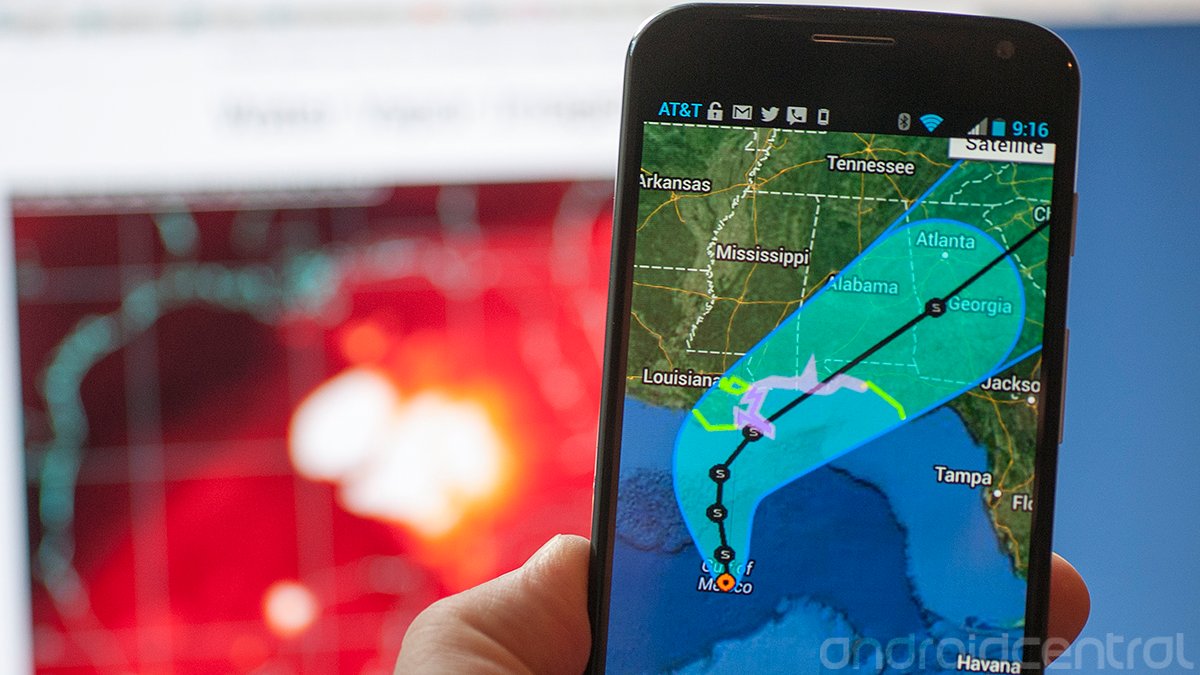Here comes T.S. Karen — charge 'em while you can

Your Android smartphone can help keep you safe and informed
It's been quite a while since we last had the threat of a tropical system hitting the U.S. — Hurricane Sandy some 11 months ago, actually — which, in addition to wrecking quite a bit of the New York/New Jersey area also canceled the Nexus 4 event in Lower Manhattan.
Now we've got Tropical Storm Karen brewing in the Gulf of Mexico, probably making landfall late this weekend or early next week. Chances are it won't do nearly the damage that Sandy did — but only a fool doesn't take these things seriously. (And I'm not just saying that because I'm right in the middle of the cone of uncertainty.)
So, now's a good time to revisit some of the ways your Android smartphone can help keep you informed and safe when storms threaten.
Tips for using your phone before, during and after a storm
- Charge your phones. Now. Keep them charged. And once the storm starts, keep them off. You'll likely lose power at some point, and there's a good chance your local cell network will go down for a bit, even with generator backups.
- Spare batteries. If you got 'em, make sure they're charged, too. If you still have time to get some, do it. Then make sure they're charged as well.
- Car charger. Get one. Get a couple, actually.
- While you still have power and internet access, be it on your phone or broadband, take advantage of features like instant uploading on Google+ or Dropbox or similar service to make sure those pictures get somewhere that can't be destroyed by the storm. Better to be safe than sorry in that case.
- If you're worried about damage and don't have a traditional camera, use your phone to take a few pictures of your home and your belongings. It'll make insurance claims much easier, should it come to that.
- After the storm, text messages may work best. If the network's up, it's going to be clogged, and calls might not go through. Text messages have a much better chance. Remember that if you're using Google Voice, it sends text messages through the traditional data channels and not SMS.
- If you just have to use Instagram or some other picture-sharing service during a storm, don't use a damn filter. Folks wanna see what's happening, and filters don't help that.
- Use apps like Evernote to help keep track of your emergency supplies.
- Before the storm, use those gas-finder apps to track down the cheapest fuel. That won't help you with the lines, but it may save you a few bucks.
- See if your phone can serve as an AM/FM radio, if you don't have any others around. (That's not out of the question in 2013. Some can do it, some can't.)
- Apps from FEMA and the Red Cross can help you find shelters and other emergency information.
- The official source for the latest storm info is from the National Hurricane Center. I also recommend Weather Underground, and Dr. Jeff Masters' blog.
And one final thought: Once you're as prepared as you can be, don't be afraid to unplug for a little while. Watching the sensational weather news non-stop before a storm just isn't good for you. Relax. And stay safe out there.
Be an expert in 5 minutes
Get the latest news from Android Central, your trusted companion in the world of Android

